How To Draw Realistic Wicker Basket Weave
Understanding the figure
To draw a pose correctly, you don't need to always carry an beefcake book with yous. Information technology's not as difficult every bit it seems: observation and practice are your best tools. If at any bespeak yous get curious almost trying something new (which I promise yous do), it never hurts to take a look at that anatomy book.
Fifty-fifty if your drawing manner is far from realistic, the aspects that brand a pose interesting and credible remain the aforementioned: strength, rhythm, activeness lines, construction and perspective.
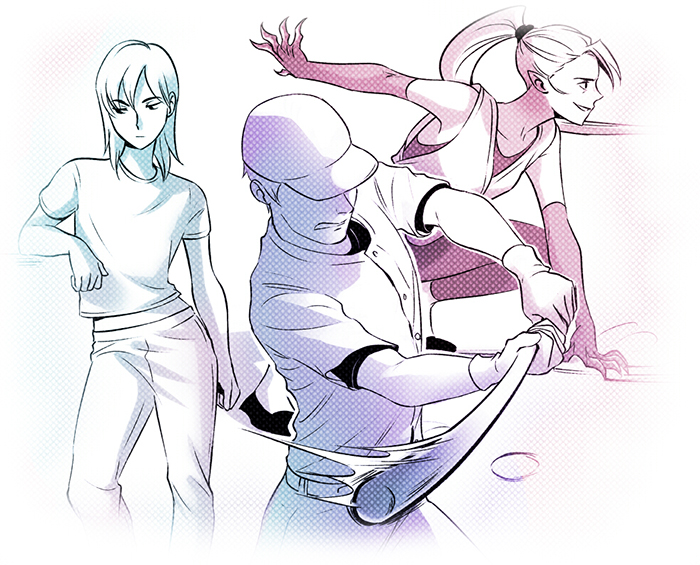
Observation:
Your closest reference is yourself. If you wait at yourself in front end of a mirror and start moving, you will notice that your trunk works as a unmarried element.
When you raise an arm, the arm is non the only function of your body that moves, unlike how the removable extremities of dolls work. The changes in your body don't resemble figure A, right? For case, your shoulder besides lifts, and many other parts of your body adapt to the motion as in effigy B.
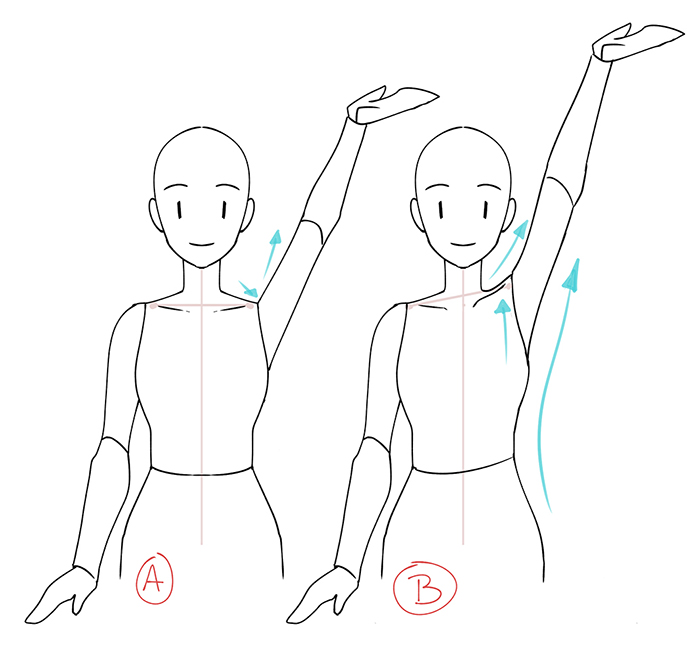
This is what ascertainment means: paying attending to the details and characteristics of the body.
Force and rhythm
Your characters move thanks to their inner forcefulness. They can walk, jump, dance… whatever comes to mind! But unless they are floating in space, it is non the only force that acts on them, as gravity makes their anxiety stay on land.
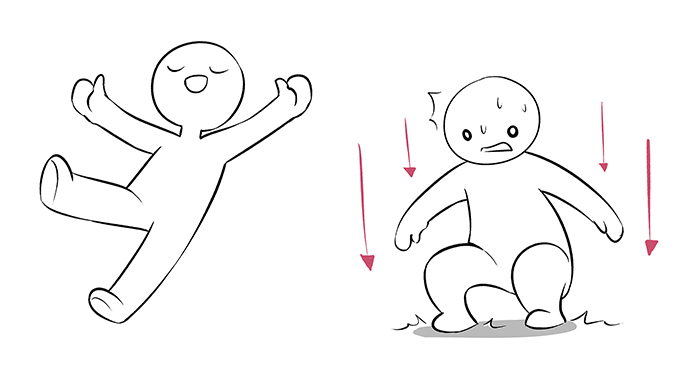
When ii or more forces interact with each other, a rhythm is fix, which provides balance and sense to the movement.
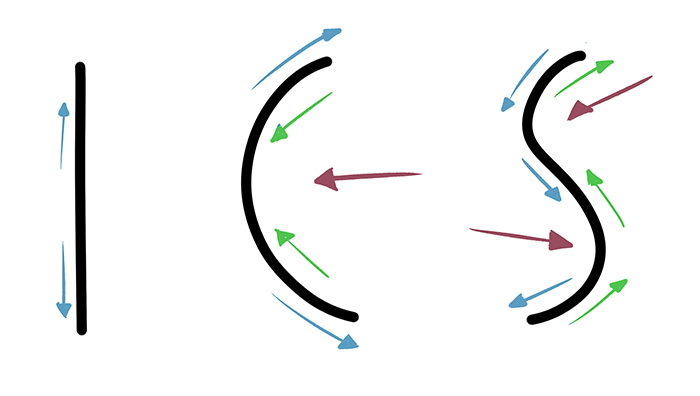
If your character is pushed to the left, his torso will fall in that direction (A), unless he puts up resistance to stand (B).
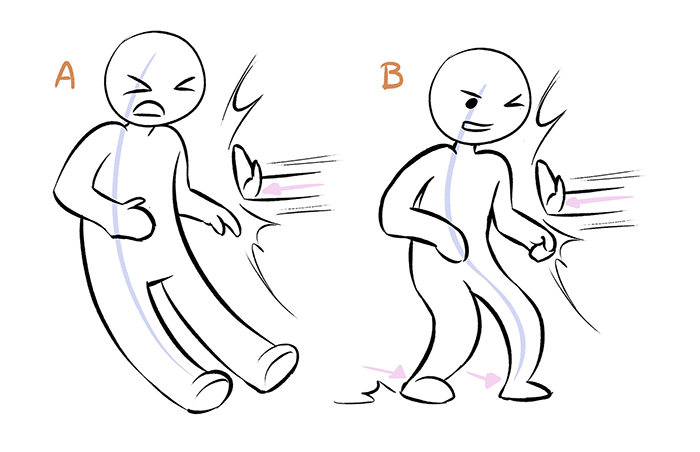
If the character wants to pull something that refuses to move, his body will lean in the opposite management. Obviously, once the cat gives in to the force, your grapheme will fall, as the cat was what kept him standing.
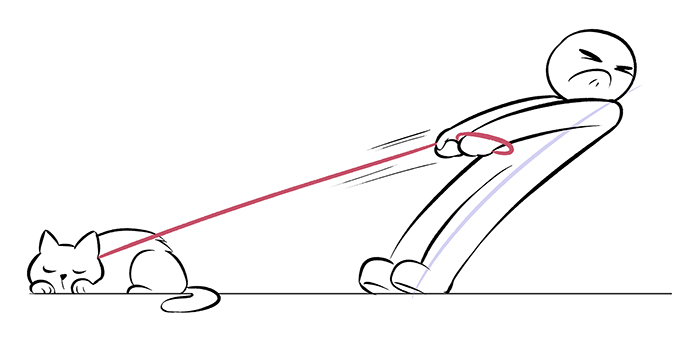
Strength and rhythm provide a lot of visual information y'all can piece of work with: the weight of your character (1), the balance of his pose (2) or the lack of it (3).
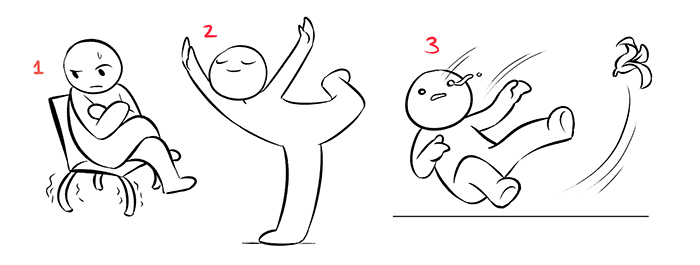
Action lines
The activity line is the imaginary guide that indicates your character's movement. It focuses on deportment and helps to unify the whole effigy.
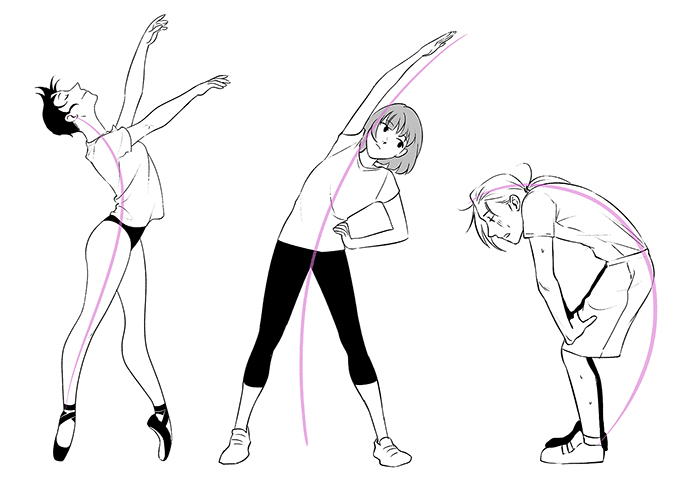
Below yous can come across a couple of examples where strength, rhythm and action lines interact together.
Case 1:
The grapheme (1) has a relaxed stance, resting on her right arm. In the figure (ii), we can run across her action line, which covers her whole body up to the foot. The shape is slightly similar to an S.
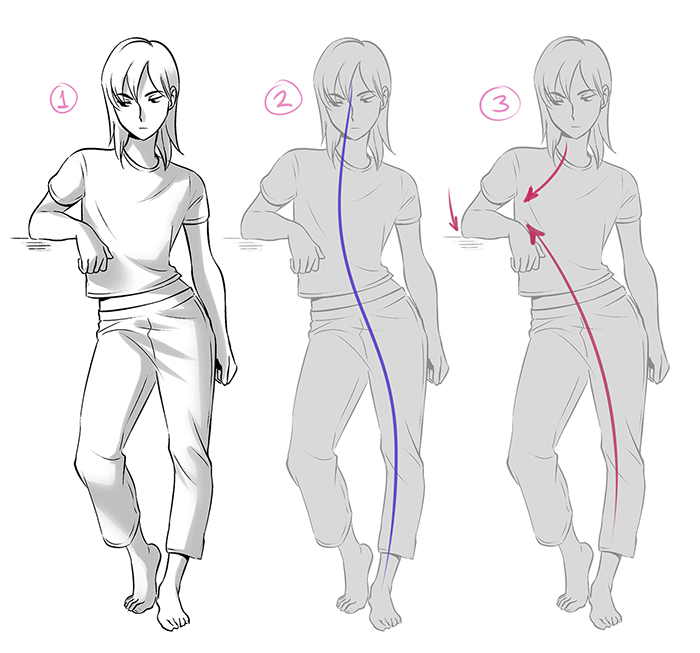
Nosotros can see it is a relaxed pose considering her weight rests on a single signal (3) and all she needs is to keep the balance with her left pes, which remains taut while the right one is resting.
Case 2:
The next pose is more than dynamic, so at that place are more things going on in this image.
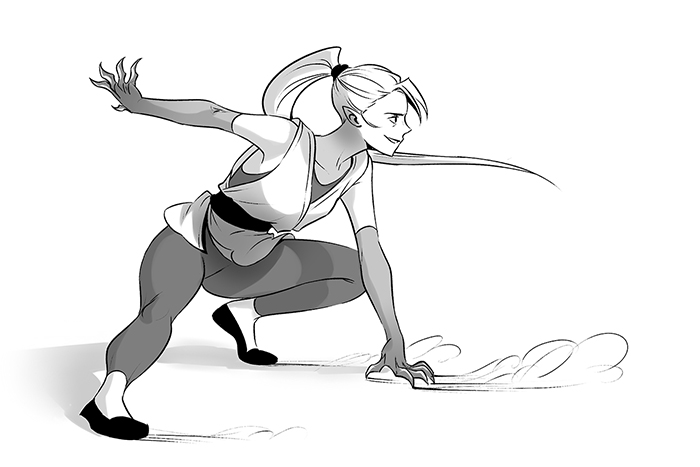
This time you can run into iii action lines, but the most important are (1) and (ii), the ones that really tell the story. The first one covers the whole figure from head to toe, and the 2nd one goes in the reverse direction, keeping the balance and forming an X. The third one simply provides greater stability to the pose.
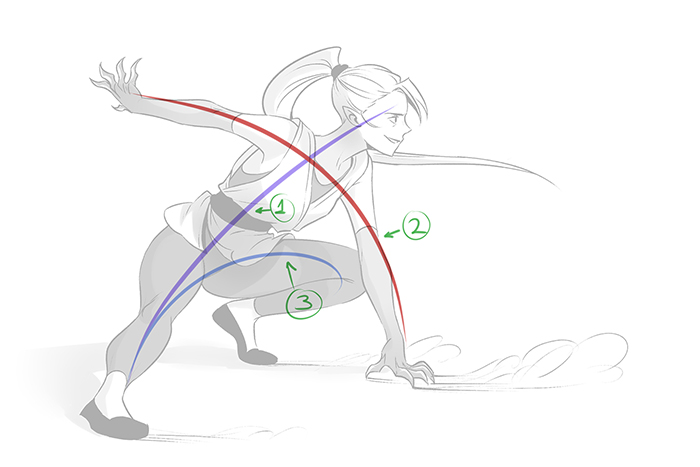
In this drawing we tin can see that there is a strength that pushes the character in the contrary direction to her gaze. Elements such as the hair, the clothes and the grit on the floor propose that the force comes from the correct side, and as these elements are light, they are afflicted by the speed with which this force acts.
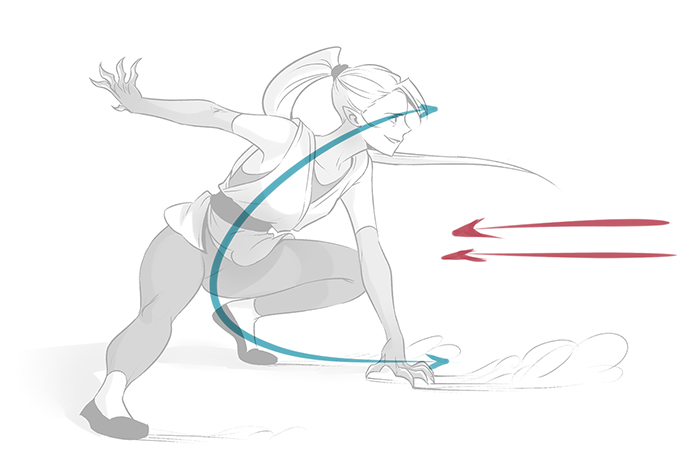
However, this daughter wants to overcome this strength with her own force. She has no intention of losing the fight.
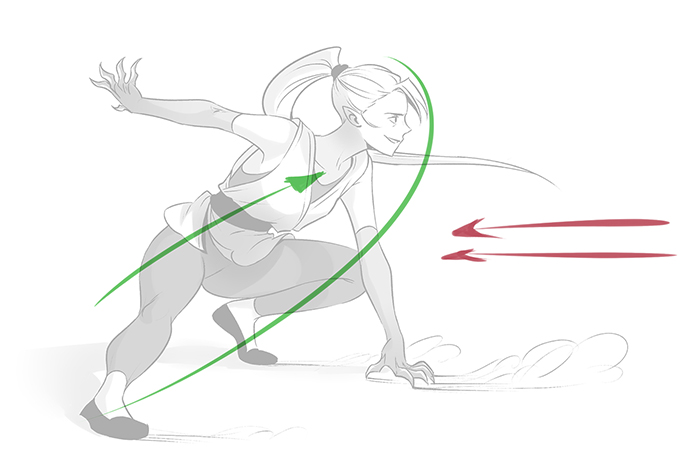
Example 3:
This fourth dimension, our graphic symbol is a baseball player. He'south spinning his body to get enough momentum and counter the ball's force to hit it far abroad. Don't you become the impression that it volition be a home run even though you lot haven't seen how the scene ends nonetheless? It's the magic of apprehension. If you know how to properly handle the strength, rhythm, and activeness lines correctly, you volition be able to guide the spectator along the path yous have set. This is very important for any comic artist.
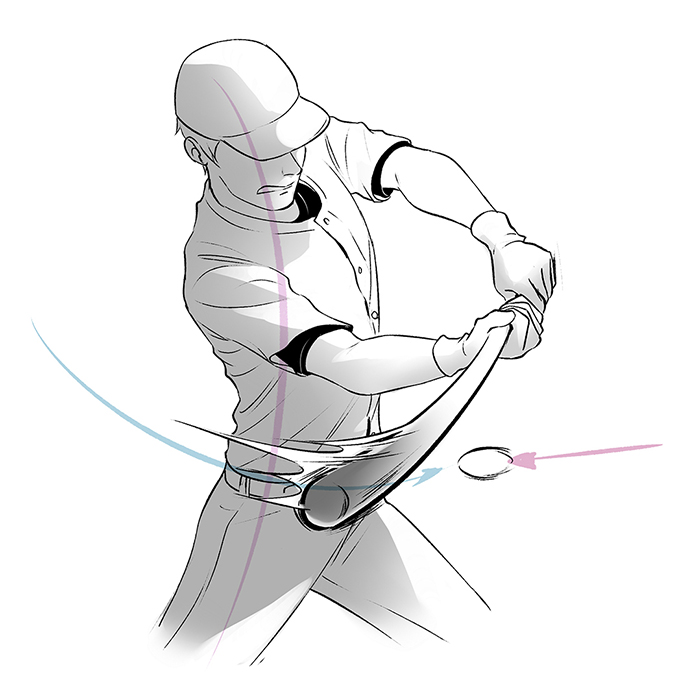
It's important that you don't overpopulate your drawing with too many activeness lines, because it could confuse the character'south intention, make the forcefulness go in dissimilar directions, and have the emphasis away from the most important action.
Construction
The trunk is quite complex and it is difficult to describe correct proportions and motion away from the 2nd aeroplane. I recommend you shape a base of operations that helps y'all discern the volume of each chemical element. To practice this, we volition utilise geometric figures such as spheres, cubes and cylinders to correspond the construction of the torso.
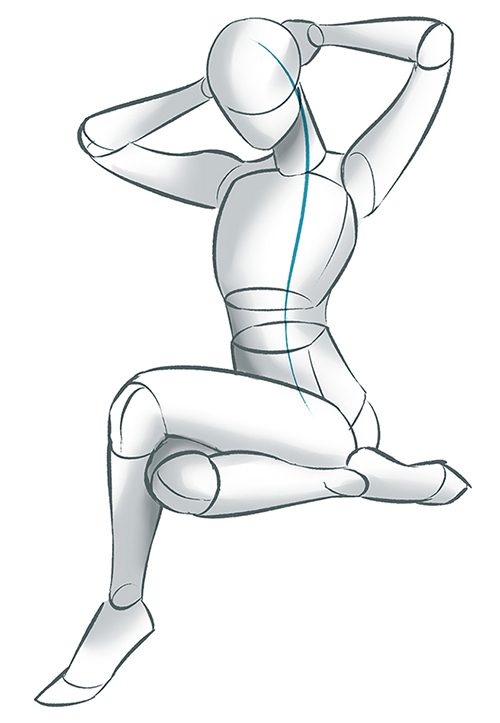
These figures can be freely rotated, stretched, flexed, and twisted according to the pose.
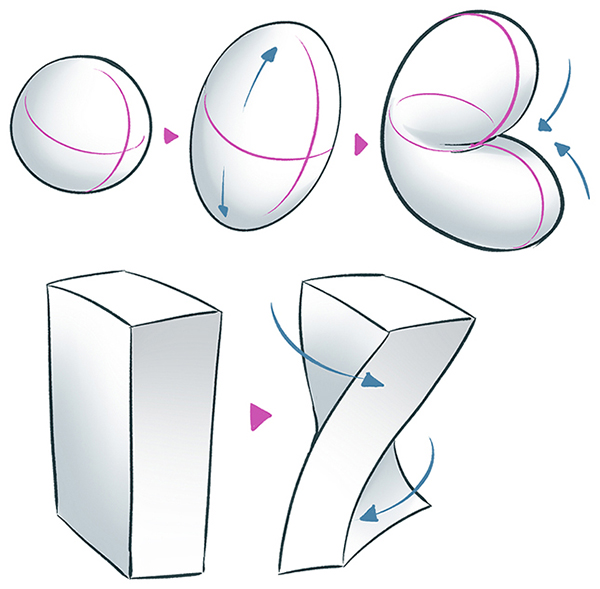
These figures represent the management of the different elements of the trunk. You must pay special attention to the limits of the joints, since at a certain point you have to plough or twist the body to continue moving in that management, changing drastically the pose.
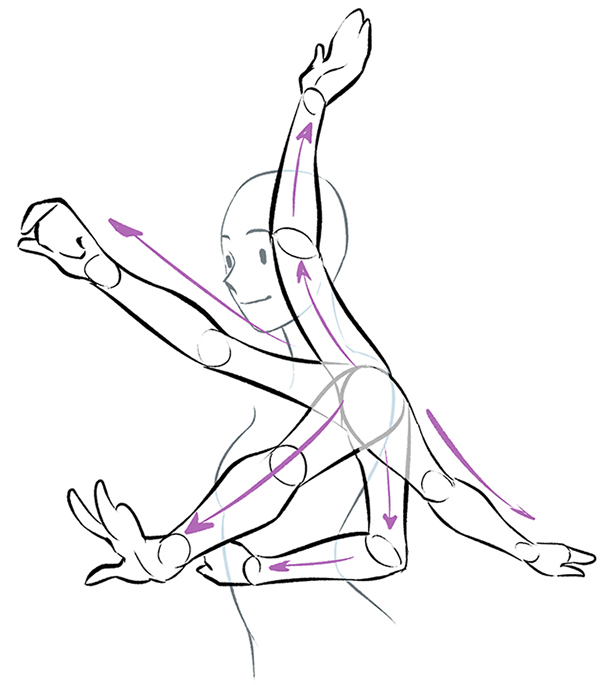
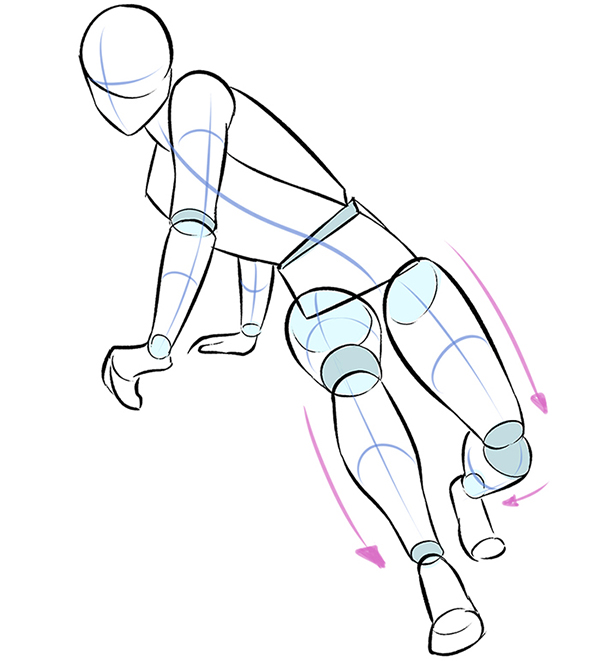
With practice, this process gets simpler. The better you understand how the figure works, the fewer guides yous volition need.
Perspective
Perspective turns the 2D plane into a 3D one and adds more depth and visual richness to the composition than simply looking at it from a frontal airplane.
The eye level or horizon line represents the actual top of the viewer's eyes (1), and the vanishing points are the lines projected from a point on the horizon (two). The following image has a perspective with two vanishing points with which we can capeesh ii faces of the figure.
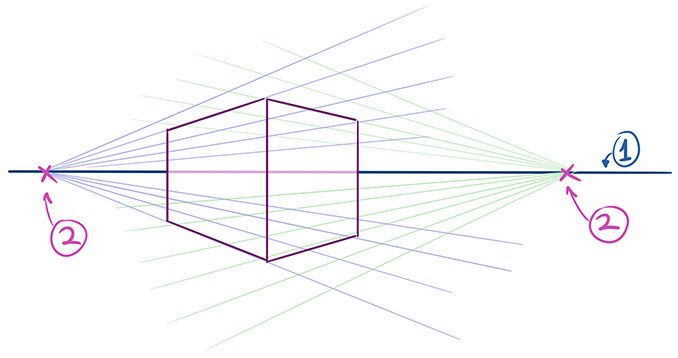
The body is more intricate, but the principle is the same. For example, this figure'due south feet and hands are smaller due to the perspective, and even propose us how nosotros should project the vanishing point lines.
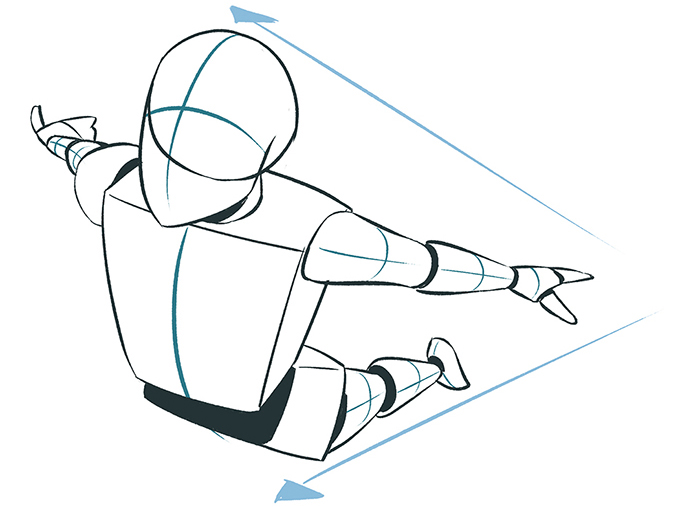
Activity poses e'er look more dramatic when the perspective is exaggerated. Even when the poses are not entirely realistic, the figures seem credible and the scenes look more interesting.
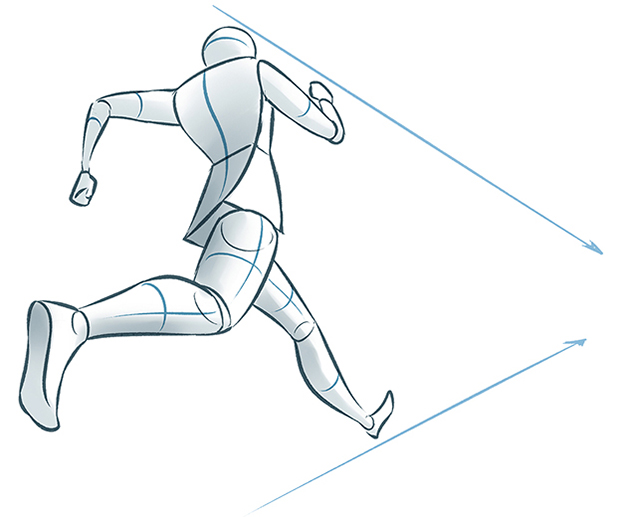
I recommend you lot to practice and read about perspective equally much as possible, equally it is non something you tin can principal in a day. Clarify as many references as y'all tin can. Eventually, you'll end up seeing vanishing points everywhere.
Essential lines
Yous can speed upwards and improve your observation skills by drawing poses using photos or actual people as a reference and setting a short fourth dimension limit for it. The aim is to capture the essential information of the figure and, of grade, to draw every bit many poses as possible.
This exercise will also help you to increase your confidence when drawing. Don't exist afraid to draw the first line, and even if yous make a mistake, avoid erasing the lines. Try to focus and depict make clean, articulate lines.
Below you tin see some examples of poses that I accept drawn inside 45 to 60 seconds:
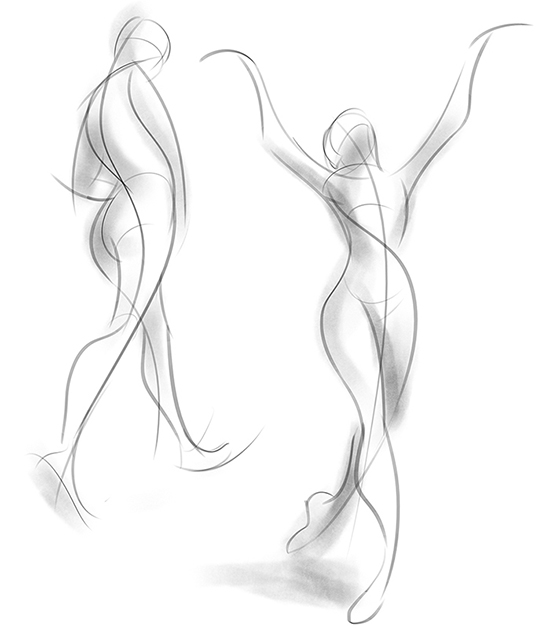
At kickoff, focus on cartoon the whole body with smooth lines. And so, if you have more time, detail and build the shape amend.
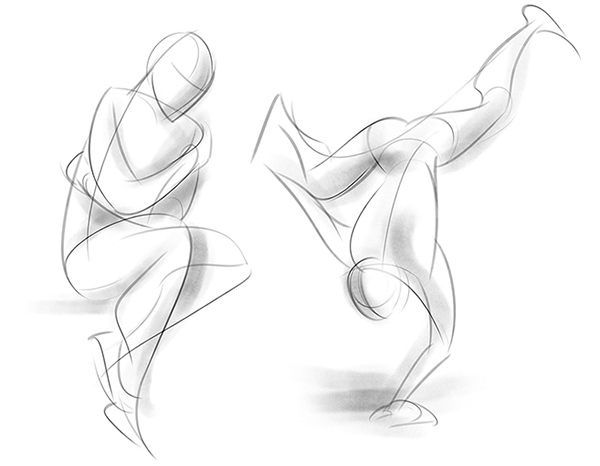
Don't be agape to describe what y'all don't run across or what is hidden, as information technology will requite yous a improve idea of the figure'south structure.
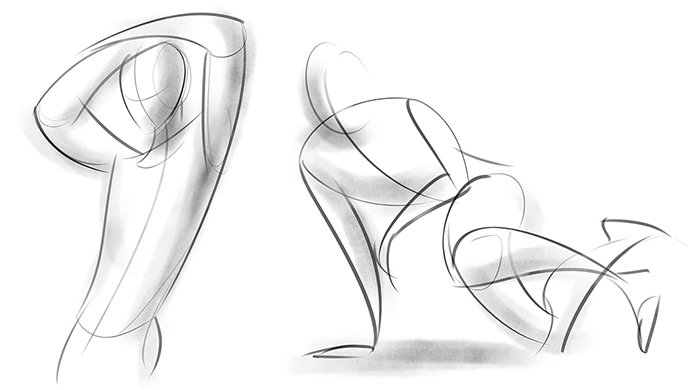
Endeavor to exaggerate the lines. It makes them softer and more credible, however crazy information technology sounds.
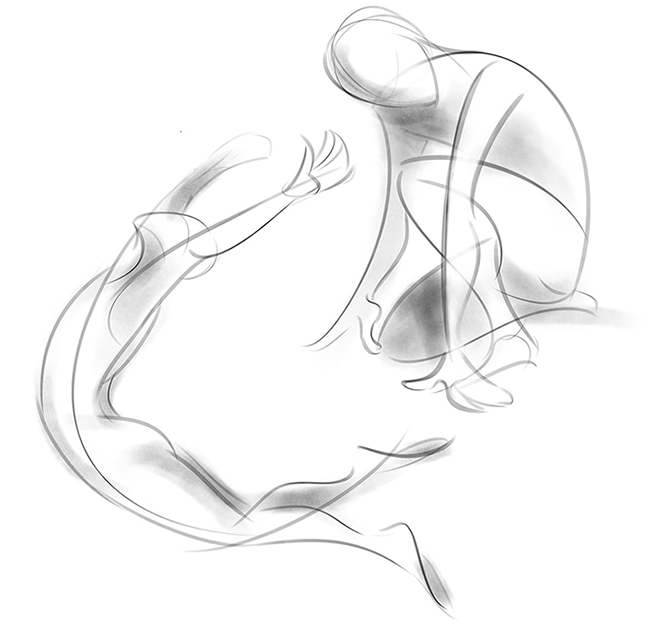
Unless the model is in a very rigid posture, try to avoid straight lines. The most natural poses are built with curves.
I promise these tips have been helpful!
If y'all desire to encounter more of my piece of work, from these links you can access my social media pages and my portfolio:
https://www.instagram.com/eri_duh/
https://twitter.com/eri_duh
https://world wide web.artstation.com/eridey
Thank you lot so much for reading this article!
– Eridey
Source: https://www.clipstudio.net/how-to-draw/archives/156164
Posted by: boothbyfirad1964.blogspot.com


0 Response to "How To Draw Realistic Wicker Basket Weave"
Post a Comment